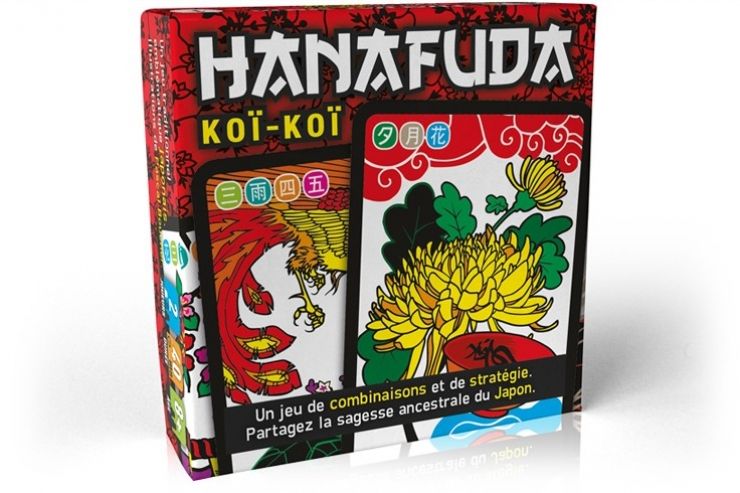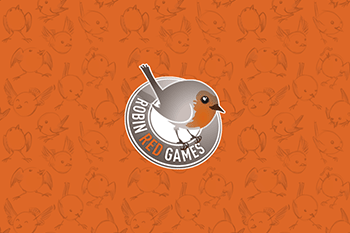



Hanafuda is a very old traditional and popular Japanese card game, which has had many modern incarnations. The name Hanafuda does not refer to a single specific game, translated literally, it means "flower game". Many games have been created based on the iconography of the original Hanafuda, and although each game has its distinct name, they are often collectively referred to as the Hanafuda generic label. We opted for the Koï-Koï version which seemed to us the most interesting and which is, without a doubt, the most widespread in Japan (although some points of rules differ from one region to another).
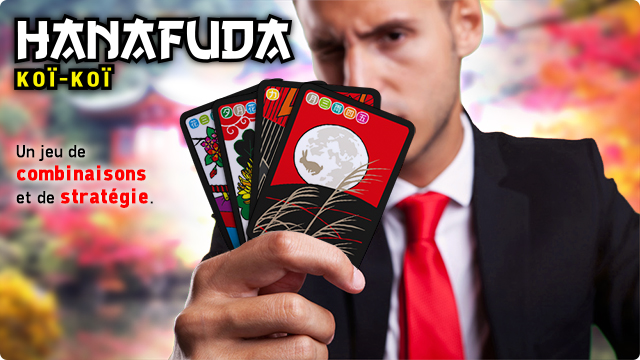
History
The first playing cards appeared in Central Asia in the 9th century, but it was in the 16th century, with the arrival of Portuguese sailors, that the Hanafuda game emerged in the form we know today. This is why the obviously Japanese illustrations hide an important Western influence. The most obvious predecessor of Hanafuda is the Portuguese Hombre game, which was the first game of 48 cards to appear in Japan. The card game quickly became very popular, unfortunately, less than a century later, when Japan introduced its new isolationist policy, all foreign playing cards became illegal.
As a result, Japanese players are abandoning Westernized conceptions in favor of Japanese characters and scenes. Due to these subtle adjustments, the Hanafuda game is rapidly gaining popularity. It even attracts the attention of illegal players: the Yakuzas. The word "Yakuza" itself, originally, refers to the worst hand in a deck of cards. By the way, many Yakuza tattoos have floral motifs.
Today, the rich graphics and the many references to the culture and history of Japan, make Hanafuda the most popular game in the country.
About the game ...
During the Edo period (1603 - 1868), the government was very strict. Anyone who criticized the government was very severely punished. This is why artists and writers are cunning to hide their opinions without stopping to express them. In particular, they used homophones (words that speak identically but have different meanings). For example, "hana" in Japanese can mean either "flower" or "nose". Thus, Hanafuda can be read as "flower game" or "game of the nose". When Hanafuda cards were banned by the government, players who wanted to buy a game secretly tapped their noses knowingly. Fun fact: Tengu (long-nosed goblin) has become the popular mascot of the game Hanafuda.
Hanafuda cards are decorated with popular themes of Japanese culture and although we have Europeanized the format of cards (traditionally, these are tiles of 37 x 56 mm), our illustrations scrupulously respect the standard in force. Nevertheless, we took the liberty of adding colored pictograms on each card in order to guide the novice player in the realization of his combinations.
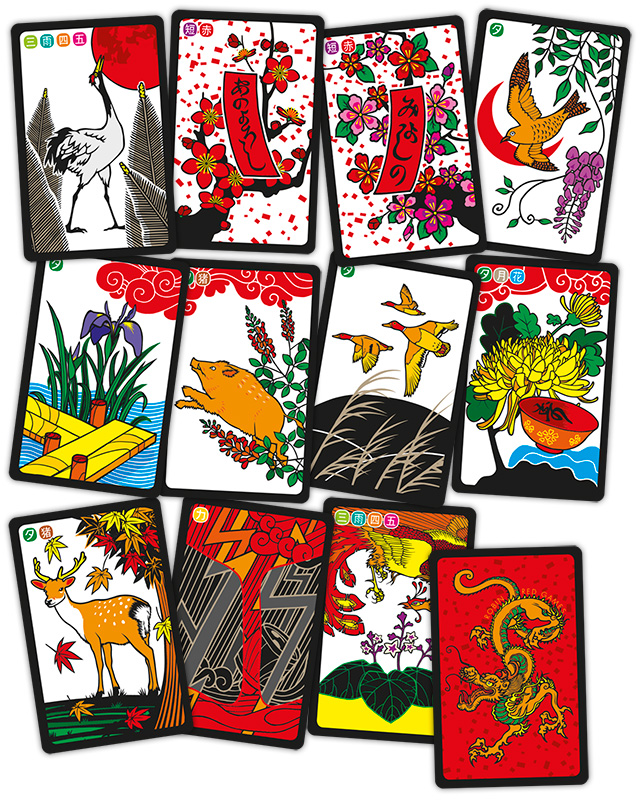
A traditional Hanafuda card game has 48 cards divided into 12 suites (one for each month of the year). The four cards of each month are illustrated according to a theme inspired by nature and Japanese culture. They are very numerous to refer to tales, customs or anecdotes of the history of Japan. Below are 3 short examples that illustrate this point.
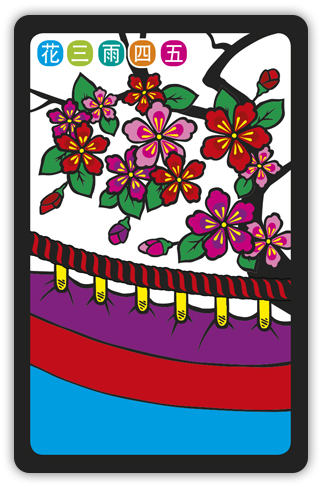 The month of March is represented by the cherry blossom. Although the plum blossom is the first of the year, the cherry tree marks the beginning of spring. The Rideau map illustrates the very popular Japanese custom of sitting under a flowering tree. Often, a multicolored curtain is set up to create alcoves suitable for contemplation.
The month of March is represented by the cherry blossom. Although the plum blossom is the first of the year, the cherry tree marks the beginning of spring. The Rideau map illustrates the very popular Japanese custom of sitting under a flowering tree. Often, a multicolored curtain is set up to create alcoves suitable for contemplation.
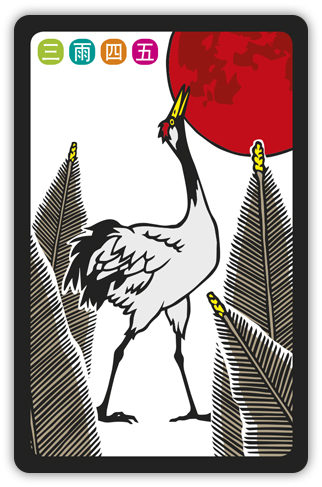 The month of January celebrates the New Year. He is represented by the Crane and the Pine. Both are symbols of longevity and luck. The pine is known to live for centuries, and never loses its leaves. As for the cranes with red crowns, they are sacred birds in Japan. They are called "the bird of happiness" because during their nuptial dance they seem to jump with joy. They mate for life, which also symbolizes marital harmony.
The month of January celebrates the New Year. He is represented by the Crane and the Pine. Both are symbols of longevity and luck. The pine is known to live for centuries, and never loses its leaves. As for the cranes with red crowns, they are sacred birds in Japan. They are called "the bird of happiness" because during their nuptial dance they seem to jump with joy. They mate for life, which also symbolizes marital harmony.
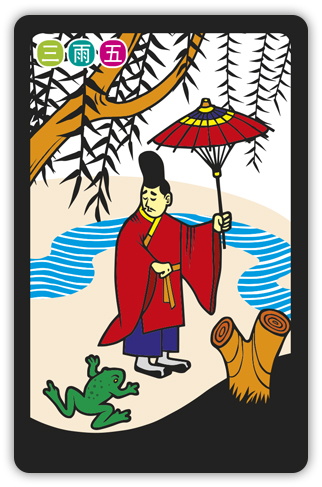 The month of November is illustrated by Willow, symbol of grace and strength in Japan. Another notable figure of the month of November is the Man In Umbrella. This man is Ono no Tofu, a famous calligrapher of the Heian period. He is credited with creating a Japanese calligraphy distinct from that of Chinese characters. A popular story tells that a rainy day when he felt particularly gloomy, he interrupted his study of calligraphy, in favor of a soothing walk. He stopped at the edge of a stream under a willow and saw a little frog trying to jump on a branch of the willow. Whenever the frog jumped, a breath of wind pushed the branch out of reach. Finally, on the eighth attempt, the frog managed to cling to the branch. Ono no Tofu learned that day, perseverance. He continued his career to become one of the most famous calligraphers of Japan.
The month of November is illustrated by Willow, symbol of grace and strength in Japan. Another notable figure of the month of November is the Man In Umbrella. This man is Ono no Tofu, a famous calligrapher of the Heian period. He is credited with creating a Japanese calligraphy distinct from that of Chinese characters. A popular story tells that a rainy day when he felt particularly gloomy, he interrupted his study of calligraphy, in favor of a soothing walk. He stopped at the edge of a stream under a willow and saw a little frog trying to jump on a branch of the willow. Whenever the frog jumped, a breath of wind pushed the branch out of reach. Finally, on the eighth attempt, the frog managed to cling to the branch. Ono no Tofu learned that day, perseverance. He continued his career to become one of the most famous calligraphers of Japan.
And technically, what is it?
From a more technical point of view, the cards are printed on 300g paper and varnished on both sides (for a better playing comfort). The box is of the type "Box bell" of 94 x 94 x 25 mm, made of a cardboard of 680g laminated with paper 115g. As for the cards, they are in the standard format of 56 x 87 mm.
• 2 jokers
• 5 cards help game
• 1 booklet of detailed rules

